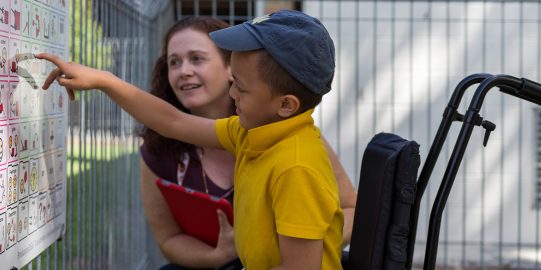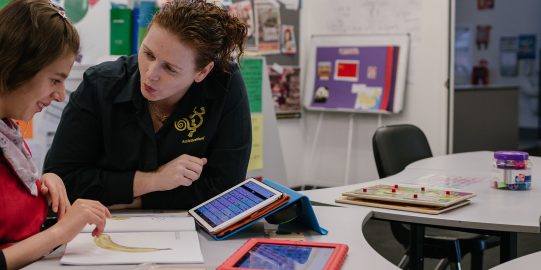Throughout the wonderful month of AAC Awareness in October, we have been talking about modelling! Without a doubt, the key strategy that is discussed and promoted as best practice for AAC is Modelling or Aided Language Stimulation. We can all understand the concept that AAC users may not learn how to effectively use their AAC system for communication if they do not see it used regularly and reliably by others in their world.
Using the AAC system
The best way that we can support our AAC user is to use the AAC system to talk yourself. If someone spoke French, you would try to speak to them in French! For children learning to use AAC, AAC is their language, so you should talk to them using AAC!
So, as you have conversations, make comments, give opinions, and ask questions you are building your familiarity with the AAC system. You are modelling the language needed and where it can be found in the AAC system. The more you talk using the AAC system, the better and more efficient you will become at it!
If you are using a robust core word vocabulary, then you should be able to say whatever you want using the AAC system. Doing this provides powerful models for the AAC user. Have a look at our post about modelling for tips on how to model.
Everybody needs to learn
It is fair to say, that with this input from you, the AAC user has the best chance to learn how to communicate using their AAC system. However, if you do not provide this input, and instead expect the AAC user to communicate using their AAC system, without you modelling how, then you may fail or not get the results you hoped for.
Individuals must see their AAC system being used, in real situations for real reasons by the people around them. We must model! We must model as often as we can! Think about how long it will take them to learn how to using their AAC system if we only model for a few moments a day or week?



